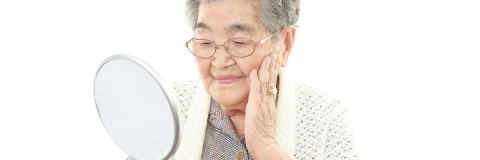
Sidebar navigation
- A generation marked
- A life-saving solution in the palm of your hand
- A new way of understanding the Universe
- A question of science
- Airborne microplastics can be found even in the worlds most remote places
- Algorithms for wind
- Amateur sleuths muscle up the science of discovery
- Are we close to the greatest discovery since penicillin
- Better Public services
- Brexit: Why EU Investment Doesnt Mean A Vote for the EU
- Britains burning question
- Building intelligence into systems allows them to make the right decision
- Call of the Wild
- Can research ethics survive a pandemic
- Children in limbo
- Complementary methods of astronomy help to discover patterns in the Universe
- Computing helps children make sense of the world and helps clinicians save lives
- Control systems are integrating renewable energy with the power grid
- Crime fighters go wild
- Diversity straining on its leash
- Dont stop moving
- Driving us closer to greener transport
- Ecology - a brand new economy
- Float to live
- From rags to environmental riches
- Fukushima
- Gravestones helping preservation
- Growing solutions for greener manufacturing
- Help smokers kick the habit
- How virtual reality could help cut crime
- Independence and violence
- Life saving NEWS
- Messages from time
- Microplastics in our homes
- Model of Light
- New Facial Palsy treatment
- New field of astrophysics is answering questions about the origins of the Universe
- New memory techniques
- New tactic in the battle against breast cancer
- Past mapped for the present
- Space technology helping earthlings to survive
- Taking a closer look at an often misunderstood material
- The Timeline Technique
- The buck stops on a shop shelf near you
- The devils in the details of the deep blue sea
- The world is our oyster
- There is something in the water
- Plumbing new depths of sustainable behaviour
- Quantum physics is powering the new tech revolution
- Revealing the secrets of the start of the Universe
- Shop til you drop
- Showing how a low carbon economy can flourish
- Transparency in global food production
- Understanding people to design better prosthetic hands and arms
- Using maths to help tackle climate change
- Virtual Reality pain management
- What does social media mean for our politics
- Why Game Theory could be the key

Why 4D facial sensing technology could be the future of facial palsy treatment
Explore new collaborative research by Dr Hui Yu, and a host of academic and industry partners
Each year, more than 51,640 people in the UK lose the ability to smile, speak, eat or close their eyes, due to Facial Palsy. The condition - caused by conditions such as Bell's Palsy and Stroke - can be devastating. Treatment is expensive too.
But thanks to one of our research teams, new low-cost therapy technologies are now in development. Not only can they improve the recovery of facial palsy patients, they could save the NHS millions too.
The new system combines Mirror Therapy, a well-known part of amputee rehabilitation, with pioneering 4D facial sensing technology, and is the result of a collaboration between facial palsy consultant Mr Charles Nduka, the Queen Victoria Hospital NHS Foundation Trust, leading industry partners, and Dr Hui Yu, our Reader in Visual Computing.
The treatment involves a patient seeing a modified reflection of their own face. Thanks to 4D facial sensing technology, the stronger muscles from the other side of their face replace those weakened by Facial Palsy.
This mirroring creates a reflective illusion and, as the patient moves their face, the brain interprets it as pain-free movement. The 4D facial sensing technology gives patients feedback on the progress of their therapy and is even suitable for use at home.
Following facial nerve injury there is frequently a loss of coordination of facial expressions...seeing themselves as they practice facial movements is easier for patients emotionally. It improves the mentality of the patient and this makes it very effective in recovery
Dr Hui Yu, Reader in Visual Computing
'Following facial nerve injury there is frequently a loss of coordination of facial expressions. But emotional wellbeing is hugely affected as well; patients do not like how they look. They may not want to be seen in public.'
'So seeing themselves as they practice facial movements is easier for them emotionally. It improves the mentality of the patient and this makes it very effective in recovery.'
The potential savings to the NHS are significant. For therapy alone, the annual costs to the health service could be as high as £2,543,360. If patients receive Botulinum Toxin injections too - an often painful treatment to control muscle imbalance and facial asymmetry - costs could spiral to £7,948,000.
Our team's new technology could reduce these costs, and help more patients to receive gold-standard treatment too. The development of refined 4D geometric model capture for facial therapy also opens up dozens of new research avenues.
But most of all, Professor Yu’s research offers more patients greater hope that with time and treatment, they can smile again.
